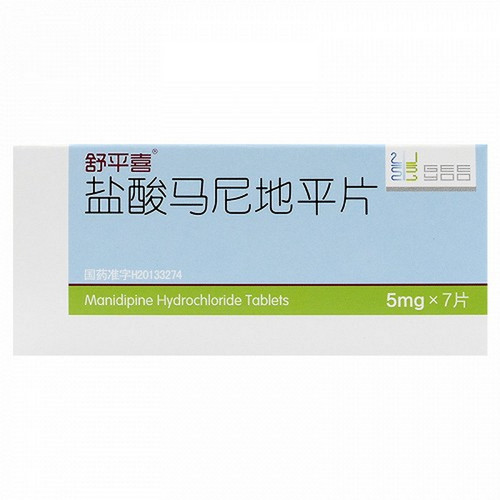Product Overview
[Drug Name]
Generic Name: Ivabradine Hydrochloride Tablets
Trade Name: Lude Ivabradine Hydrochloride Tablets (5mg x 28 tablets)
[Main Ingredient]
The active ingredient in this product is ivabradine hydrochloride. Chemical Name: 3-(3-{[((7S)-3,4-dimethoxybicyclo[4.2.0]octa-1,3,5-trien-7-yl)methyl]methylamino)propyl)-1,3,4,5-tetrahydro-7,8-dimethoxy-2H-3-benzazepin-2-one, hydrochloride. Molecular Formula: C₂ₐH₃₆N₂O₅•HCl. Molecular Weight: 505.1
[Properties]
This product is an orange film-coated tablet. The 5mg tablet is oval, and the 7.5mg tablet is triangular. The tablet appears white after removal of the coating.
[Indications/Main Functions]
Indicated for use in patients with NYHA Class I-IV chronic heart failure in sinus rhythm with a heart rate ≥75 beats/minute and associated systolic dysfunction, in combination with standard therapy including beta-blockers, or when beta-blocker therapy is contraindicated or intolerant.
[Specifications]
5mg x 28 tablets
[Dosage and Administration]
Oral, twice daily, with meals in the morning and evening (see [Pharmacokinetics]). Initial treatment with this drug is limited to patients with stable heart failure. It is recommended that this drug be used under the guidance of a physician experienced in the treatment of chronic heart failure. The recommended starting dose is 5mg twice daily. After two weeks of treatment, if the patient's resting heart rate remains above 60 beats/minute, the dose should be increased to 7.5 mg twice daily. If the patient's resting heart rate remains below 50 beats/minute or symptoms related to bradycardia, such as dizziness, fatigue, or hypotension, the dose should be reduced to 2.5 mg (half a 5 mg tablet) twice daily. If the patient's heart rate is between 50 and 60 beats/minute, the dose should be maintained at 5 mg twice daily. During treatment, if the patient's resting heart rate remains below 50 beats/minute or symptoms related to bradycardia develop, the dose should be reduced from 7.5 mg or 5 mg twice daily to the next lower dose. If the patient's resting heart rate remains above 60 beats/minute, the dose should be increased from 2.5 mg or 5 mg twice daily to the next higher dose. If the patient's heart rate remains below 50 beats/minute or bradycardia symptoms persist, the drug should be discontinued (see [Precautions]). Special Populations: Patients with Renal Insufficiency: No dose adjustment is required for patients with renal insufficiency and creatinine clearance greater than 15 ml/min (see [Pharmacokinetics]). There are no clinical data on the use of this product in patients with creatinine clearance less than 15 ml/min; caution should be exercised in such patients. Patients with Hepatic Impairment: No dose adjustment is required for patients with mild hepatic impairment; caution should be exercised in patients with moderate hepatic impairment. There are no studies on the use of this product in patients with severe hepatic impairment; systemic exposure may be significantly increased after use in such patients; this product is contraindicated in patients with severe hepatic impairment (see [Contraindications] and [Pharmacokinetics]).
[Adverse Reactions]
See package insert for details.
[Contraindications]
Contraindications: Hypersensitivity to the active ingredient or any of the excipients; resting heart rate less than 70 beats per minute before treatment; cardiogenic shock; acute myocardial infarction; severe hypotension (<90/50 mmHg); severe hepatic insufficiency; sick sinus syndrome; sinoatrial block; unstable or acute heart failure; pacemaker-dependent (heart rate completely controlled by pacemaker); unstable angina; third-degree atrioventricular block; concomitant use with potent cytochrome P450 3A4 inhibitors, such as azole antifungal drugs (ketoconazole, itraconazole), macrolide antibiotics (clarithromycin, oral erythromycin, josamycin, telithromycin), HIV protease inhibitors (nelfinavir, ritonavir), and nefazodone (see [Drug Interactions and Pharmacokinetics]); concomitant use with the moderate CYP3A4 inhibitors verapamil or diltiazem, which have heart rate-lowering effects (see [Drug Interactions]). Pregnant or lactating women, as well as women of childbearing potential who are not taking adequate contraceptive measures (see [Use in Pregnant and Lactating Women]).
[Precautions]
See package insert for details.









